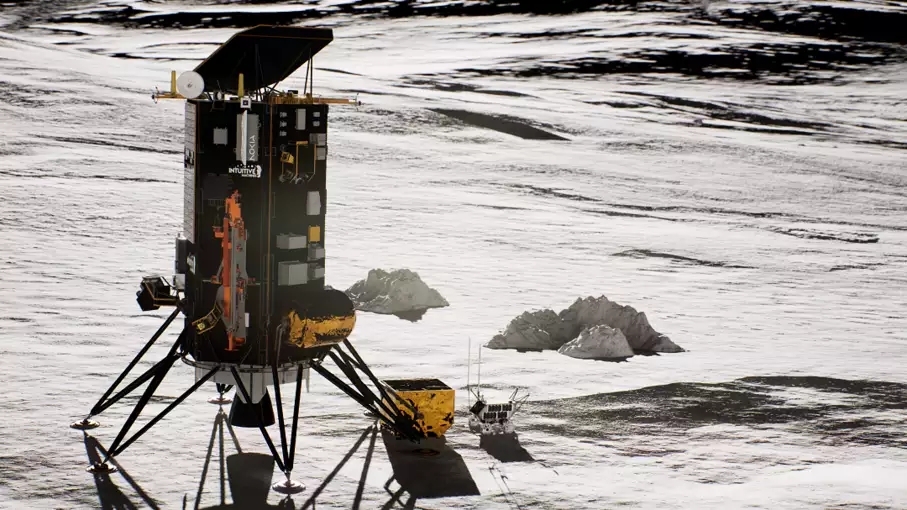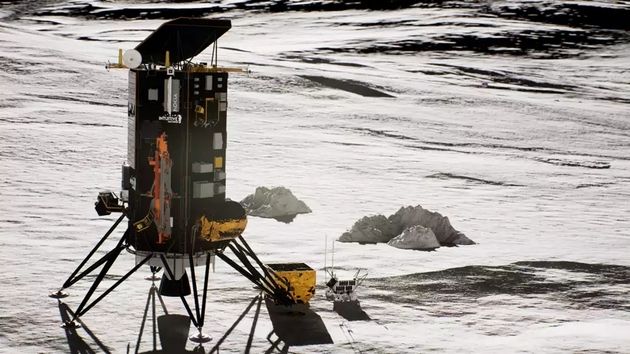The moon will soon have 4G


Just as mobile communications are essential for life and the economy on Earth, they will be a key element for the development of life on the Moon or on Mars. Cellular networks will support the exploratory missions by offering communication capabilities to team members and by connecting rovers, transport vehicles, robots and other drones.
“One day, astronauts may be able to take their smartphones into space, using them in a lunar or Martian habitat in the same way they would use them on Earth,” enthuses Nokia Bell Labs, in a blog post.
In the meantime, the R &D division of the Finnish equipment manufacturer has been retained by NASA to develop a network specially designed to survive the journey to the Moon and above all to operate in a particularly inhospitable environment without atmosphere, therefore without natural protection against cosmic radiation, and with temperatures that can fluctuate up to 300 ° C between lunar day and night.
Launch scheduled from November
Knowledge on which the Finnish group intends to capitalize well. “If Nokia can build a network that can work on the Moon, we can build a network that can work in the most extreme environments on Earth. »
To accumulate this experience, Nokia will participate in Nasa’s Tipping Point initiative aimed at developing space technologies that will be used for future explorations. Recall that with the Artemis program, the United States aims for a return of man to the Moon in 2025, he who has not walked on lunar soil since 1972.
Nokia, associated with Intuitive Machines and Lunar Outpost, will be part of the unmanned lunar mission IM-2, of which SpaceX’s Falcon 9 rocket will land at the moon’s South Pole. Its launch is scheduled from next November according to a three-month window.
The future 4G/LTE lunar network consists of two main components. The first, the base station, will be integrated directly into the spacecraft and will serve as a cell site. The second component will be the radio equipment installed on two lunar vehicles: the rover Mobile Autonomous Prospecting Platform (MAPP) from Lunar Outpost and the Micro-Nova hopper from Intuitive Machines.
“Together, these radio components will form a network that will allow the vehicles and the lander to communicate with each other. “A powerful direct radio connection with the Earth will also provide data and images. Nokia will use, for this, a low-power, compact and space-saving version of its 4G / LTE microcell.
“Instead of reinventing the wheel” by creating a proprietary network in space, we are taking advantage of the same advanced technologies that connect billions of smartphones on Earth,” explains Thierry Klein, President of Bell Labs Solutions Research at Nokia.
Ice cream on the Moon?
However, the stakes are not the same. The future network must meet “the critical communication needs of space exploration for short- and long-term missions”. The astronauts will need access to voice, video and data communication capabilities, as well as telemetry and biometrics data, while remotely controlling the robots and vehicles.
In other missions, IM-2 must look for evidence of the presence of ice on the Moon. The first images of this lunar ice may therefore be sent from Nokia’s lunar network. “The images, data and telemetry collected by MAPP will be sent back to the lander via the 4G/LTE network, then relayed to Earth. »
The United States has embarked on a race against time to be the first country to walk on the Moon again. For their part, China and Russia plan to install a permanent base on the Earth’s natural satellite as part of the International Lunar Research Station (ILRS) program. The Middle Kingdom is preparing to launch new satellites to provide communication and navigation services to this future base.
Photo source: Intuitive Machines and Nokia Bell Labs








